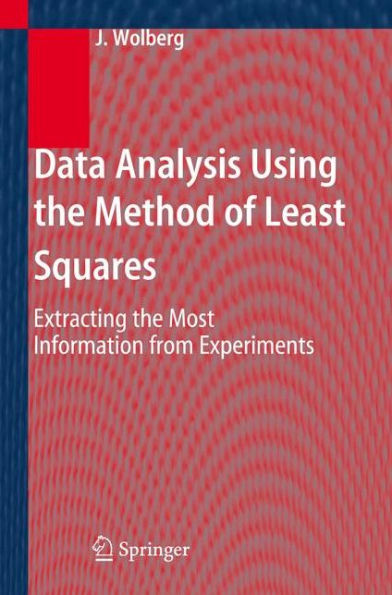Data Analysis Using the Method of Least Squares: Extracting the Most Information from Experiments
Measurements through quantitative experiments are one of the most f- damental tasks in all areas of science and technology. Astronomers a- lyze data from asteroid sightings to predict orbits. Computer scientists - velop models for recognizing spam mail. Physicists measure properties of materials at low temperatures to understand superconductivity. Materials engineers study the reaction of materials to varying load levels to develop methods for prediction of failure. Chemical engineers consider reactions as functions of temperature and pressure. The list is endless. From the very small-scale work on DNA to the huge-scale study of black holes, quantitative experiments are performed and the data must be analyzed. Probably the most popular method of analysis of the data associated with quantitative experiments is least squares. It has been said that the method of least squares was to statistics what calculus was to mathematics. - though the method is hardly mentioned in most engineering and science undergraduate curricula, many graduate students end up using the method to analyze the data gathered as part of f their research. There is not a lot of available literature on the subject. Very few books deal with least squares at the level of detail that the subject deserves. Many books on statistics - clude a chapter on least squares but the treatment is usually limited to the simplest cases of linear least squares.
1101676940
Data Analysis Using the Method of Least Squares: Extracting the Most Information from Experiments
Measurements through quantitative experiments are one of the most f- damental tasks in all areas of science and technology. Astronomers a- lyze data from asteroid sightings to predict orbits. Computer scientists - velop models for recognizing spam mail. Physicists measure properties of materials at low temperatures to understand superconductivity. Materials engineers study the reaction of materials to varying load levels to develop methods for prediction of failure. Chemical engineers consider reactions as functions of temperature and pressure. The list is endless. From the very small-scale work on DNA to the huge-scale study of black holes, quantitative experiments are performed and the data must be analyzed. Probably the most popular method of analysis of the data associated with quantitative experiments is least squares. It has been said that the method of least squares was to statistics what calculus was to mathematics. - though the method is hardly mentioned in most engineering and science undergraduate curricula, many graduate students end up using the method to analyze the data gathered as part of f their research. There is not a lot of available literature on the subject. Very few books deal with least squares at the level of detail that the subject deserves. Many books on statistics - clude a chapter on least squares but the treatment is usually limited to the simplest cases of linear least squares.
54.99
In Stock
5
1

Data Analysis Using the Method of Least Squares: Extracting the Most Information from Experiments
250
Data Analysis Using the Method of Least Squares: Extracting the Most Information from Experiments
250Paperback(2006)
$54.99
54.99
In Stock

Product Details
| ISBN-13: | 9783540256748 |
|---|---|
| Publisher: | Springer Berlin Heidelberg |
| Publication date: | 02/10/2006 |
| Edition description: | 2006 |
| Pages: | 250 |
| Product dimensions: | 5.98(w) x 9.02(h) x 0.02(d) |
From the B&N Reads Blog
